Religious communities embrace diverse members
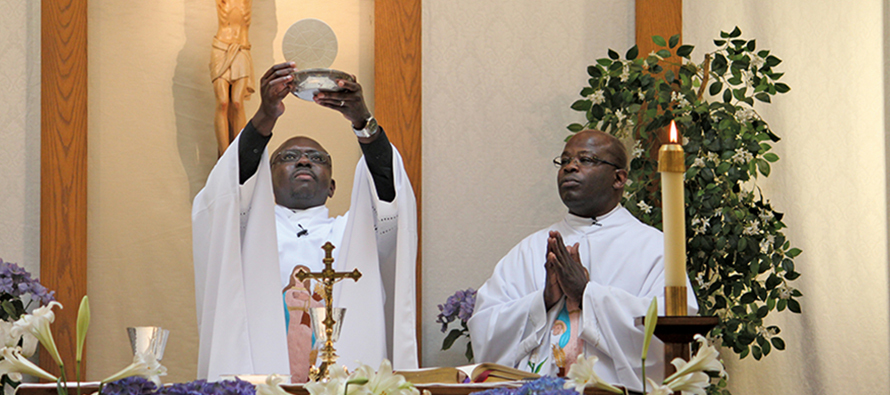
Father Richard Toboso, G.H.M. brings Kenyan sensibilities to the way he celebrates Mass. Here Toboso elevates the host as Father Charles Aketch, G.H.M. assists. (Photo courtesy of Glenmary Home Missioners)
THE FACE OF religious life is changing with many cultures increasingly represented in communities. While this has been going on for decades, religious institutes more and more are naming and claiming ethnic diversity. With that comes a slew of new practices and understandings. Call it the work of love.
Father Richard Toboso, G.H.M., a Glenmary Home Missioner, directs the Glenmary House of Formation in Indiana. He and the majority of his students are Kenyan or Ugandan.
One of the first cultural differences he works on with new international students is body language: “Where I grew up, when my dad or somebody older than me was speaking, I wasn’t supposed to look them straight in the eye. But over here, when somebody is questioning you, if you don’t make eye contact, they may think you are not a straightforward person. That’s a big shock!” Eye contact can be an issue in school or at a routine traffic stop, but it’s also an issue in a religious community with a mixture of members. Postures of respect may not be understood as respectful.
One of Toboso’s former students, now a Glenmary priest serving in a remote spot in Eastern North Carolina, is Father Cavine Okello, G.H.M., ordained in 2024. He brings with him a lively spirituality that is new to his parishioners. Animated music, including drums, rhythmic movement, lively offertory processions, hand clapping, and spontaneous acclamations are common in Kenyan liturgies.
“I bring in that spice that is a little different,” he says with a smile. “Kenyan spirituality comes with active participation in our worship, especially during Mass, but wherever people are praying. It is one way of showing our gratitude to God, and showing that we are happy to be here. People [in the United States] are a little more formal—it’s a little bit dull! But active participation makes me feel that every person is welcomed.”
Working at warm welcomes
Welcome can be an issue in a religious community where an unconscious comment can create a chill for newcomers who are different. However, religious communities and organizations that serve them increasingly work at cultural understanding. VISION’s publisher, the National Religious Vocation Conference, for instance, received a grant in 2024 that allowed the board and staff to be trained in cultural awareness and financed intercultural resources for members.
At the ground level, community houses also are creating an atmosphere of welcome. “We are a congregation of women religious of different ages, diverse cultures, with varied gifts and talents,” says the Sisters of Charity of the Incarnate Word of San Antonio (CCVI) website (amormeus.org).
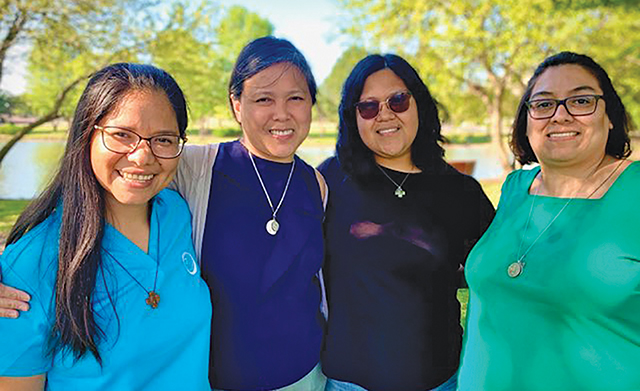
Sister Christi Sanchez, CCVI says, “We have to respect each other, and we need to respect where we come from, especially our roots, getting to know the other person deeper.” Members of her congregation have European, Mexican, and now Filipino roots. “We celebrate each other, our traditions, our cultures,” Sanchez adds.
A practical example? She’s a Texan whose parents immigrated from Mexico. In her house is a Filipina. She and her sisters became curious about Filipino practices around Christmas. “We said, ‘Let’s celebrate you this time instead of celebrating us, because we can have tamales all year-round, but we don’t know what you have during Christmas. We don’t know what you have at New Year’s.’”
That desire to include everyone’s experience came up again at the Fourth of July. The result was a three-way sharing among the sisters about Independence Day customs in the United States (July 4), Mexico (September 16), and the Philippines (June 12). Each sister was affirmed in her own culture with a simple question, Sanchez says: “What do you celebrate and how do you celebrate it?”
Deep dives into culture
Empowering that kind of cultural understanding and affirmation within religious communities is part of the goal of the Cultural Orientation Program for International Ministers at Loyola Marymount University in Los Angeles. The director, Father Ricky Manalo, C.S.P., describes the program, which operates in a hybrid form. “It’s kind of a deep dive into U.S. culture,” he says, involving classes on various topics that affect U.S. pastoral ministry, such as racism, LGBTQ ministry, immigration—all from a pastoral perspective.
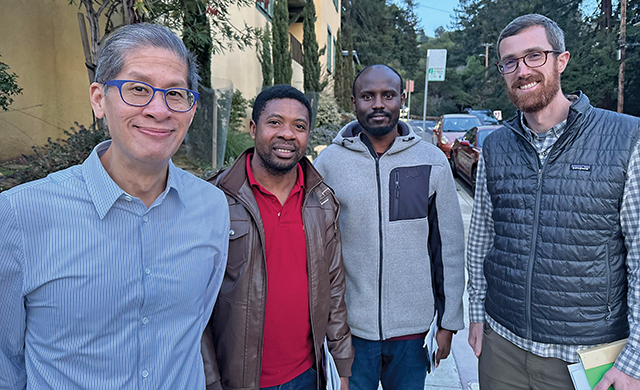
Manalo is a Filipino American and a member of the Paulist Fathers. In his experience, international newcomers can negatively bump against their American-born peers in some pretty basic ways. One big area, he says, is “collectivists versus individualists.” Asian, African, and Latino cultures are collectivist, meaning, “It’s not so much about me than it is about us,” he says.
He gives an example of someone organizing a liturgy in a Vietnamese parish. The organizer asked a parishioner to be a reader, and she agreed in advance. Then she didn’t show up. “In the Vietnamese culture, which is collectivist, [individual] choice without consulting the larger group is unheard of. Whereas in the United States, I could say yes, despite what my collectivist group or family may think.” The organizer should have asked the group, says Manalo. Similar dynamics can become issues in any religious house or gathering.
“Sometimes food can be a sticking point,” adds Manalo. “There might be particular dishes that smell, you know,” he says, laughing. “There might be sensitivity.” Think fish served with heads still on or hand-slaughtered whole goats on a barbecue spit, favorites in rural Kenya. “I always tell religious community members, ‘Don’t make fun of other people’s food. Don’t even joke about it.’ It’s very sensitive.”
Differences in working style also merit attention in diverse religious communities. In the United States, “we’re all about work,” Manalo says. “Other cultures have a different approach, kind of blending work with leisure, family, even faith. They don’t compartmentalize.” Or someone from a hierarchical culture might wait to be told what to do in their ministry. That hesitance can be perceived as lazy by community members from the dominant culture. For some international newcomers, using first names without titles for unfamiliar priests, brothers, or sisters might be a hurdle.
Sense of belonging
But not everyone is struggling. Sister Phuong Dong, R.S.M., a 35-year-old social worker, has been fully professed as a Religious Sister of Mercy since June 2023. She was born in Vietnam and raised in Atlanta. She currently ministers in Gastonia, North Carolina, close to Charlotte.
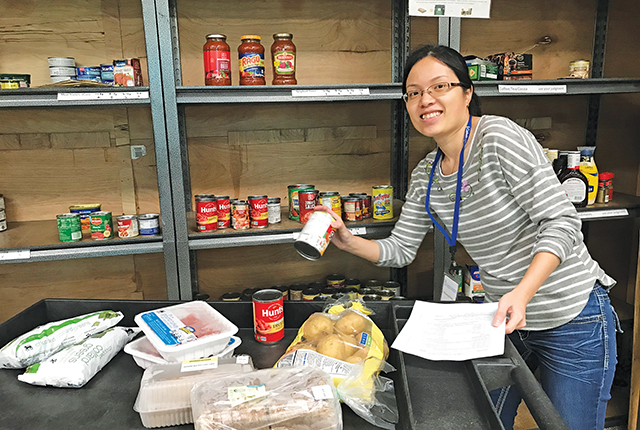
Dong remembers she had a slight language barrier when she first entered, but a sense of care and welcome prevailed. Although fluent in English from school and work, in her family home it was Vietnamese only. So it was a tough transition to be in an all-English environment. “I never lived away from my family,” she recalls. “When I entered, I had difficulties learning to live with people from different cultures and personalities, as well as learning about religious life. I saw very few sisters of Asian heritage.
“With sisters around me I felt their eagerness to learn about my culture and who I am as a person,” she adds. Among these women, says Dong, “I feel loved. I feel I belong.”
Intercultural sharing is the norm in her Mercy community. The sisters share their own traditions with each other. “Like the Day of the Dead, after All Saints’ Day. They pray for dead family members and have all of the candy and snacks that they put on the altar.” Other sisters decorated the convent for Day of the Dead. “I was like, OK, that’s interesting!” she laughs.
“It’s just different. Then we brought up pictures of our deceased loved ones, and we prayed, I was like, ‘This is nice, you know?’” At other times her Caucasian sisters would share stories of Mardi Gras or the Super Bowl—things she knew little of in her Vietnamese-American home.
Then came her turn: Lunar New Year. “Chinese New Year and the Vietnamese New Year are pretty similar,” she says. It’s a big celebration in the Vietnamese community, and there’s always a Vietnamese parish somewhere that hosts an event. Hers was at St. Joseph’s in nearby Charlotte. The sisters in her house went to St. Joseph’s along with her. “The church would have their own celebration, celebrating how much New Year really meant for us. It’s really important to pray for peace for the whole world and for our families to honor them…. And they have the dragon dance, too. The sisters seemed to enjoy that a lot! The dragon goes around, there’s music, it’s very festive.”
Cracking open cultural issues
Holidays like the Lunar New Year provide an automatic occasion for cultural interchange. Other times, communities will sponsor events that encourage new insights. Father Dan Dorsey, G.H.M., president of the Glenmary Priests and Brothers, organized a civil rights pilgrimage in the summer of 2024 to bring younger African, Vietnamese, and Anglo Glenmary men together with older Glenmary men and employees for several days on the road. “The point was to have an encounter, an opportunity for the pilgrims to gain a better understanding of Southern culture,” says Dorsey.
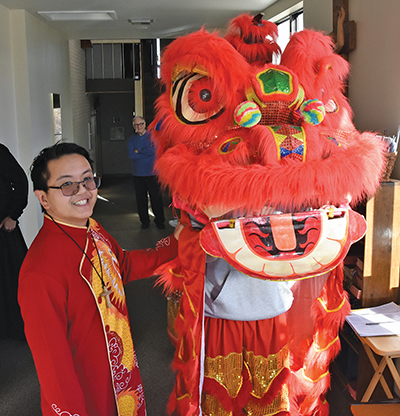
The group went by bus through Alabama and Mississippi, visiting museums about slavery, and infamous sites of racist violence, including the site of Dr. Martin Luther King’s assassination. Each day began with prayer either in English, Vietnamese, or Swahili.
On the bus, a Vietnamese-American Glenmary seminarian candidate, Philip Langford, shared how, as a child, his family had traveled from Texas to Florida by car. At a Mississippi gas station they encountered a passing Ku Klux Klan group. “My mother immediately told me to lie on the floorboard,” he recalls. Experiencing racism directly was foreign to many of his Glenmary brothers. That exchange was one of many that the pilgrimage encouraged.
Each community will have its own approach to welcoming and learning from members of diverse cultures. Newer members in every community, from all cultures, have their own stories to share. Dong has advice for them: “Be willing to show or to educate other people about your culture. Don’t be shy, I would say. Express your cultural experiences. Each culture has gifts to bring to each other. I’m very happy when sisters share their culture with me. I’m willing to do the same.”
Related: VocationNetwork.org, “Religious communities have deep and diverse roots.”
Tags
Related
- Questions you’ll be glad you asked
- What monastic mystics got right about life
- How my parents responded when I became a brother
- Vocation Basics: You are already called—Message to youth from Pope Francis
- Meet the parents
- Charism: The gift that shapes lives
- What our vows mean
- Discover five treasures of religious life
- Religious making a difference
- Religious seekers in legal limbo Read More
Most Viewed
- Find your spirituality type quiz
- Questions and answers about religious vocations
- Celibacy quiz: Could I be a nun? Could I be a brother? Could I be a priest?
- Resources for older discerners or those with physical and developmental differences
- About Vocation Network and VISION Guide


